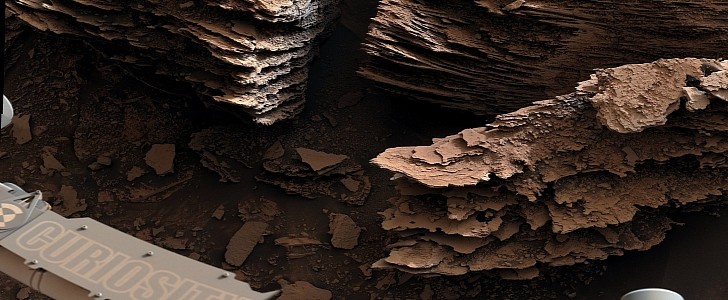Although NASA's Curiosity rover is getting ready to celebrate its 10th year on Mars, the machine shows no signs of slowing down. These past months, the rover has been climbing Mount Sharp, going from a clay-rich area to one filled with a salt mineral called sulfate. Exploring this transition zone can help scientists understand more about the Red Planet's watery past.
Curiosity has been studying Mount Sharp, a 3-mile-high (5-km-high) mountain in the center of Gale Crater, since 2014. Over the years, the rover has been exploring the intriguing terrain, revealing crucial clues about Mars' ancient past.
According to NASA, the bottom layers of Mount Sharp were created millions of years ago as the water carried sediment from Gale Crater's northern rim toward its center. Recently, Curiosity reached a region that is rich with clay minerals. These minerals are thought to have formed back when lakes and streams stretched across the crater.
The rover's findings reveal that ancient streams turned into trickles, and sand dunes developed on top of the lake sediments.
"We no longer see the lake deposits that we saw for years lower on Mount Sharp," said Ashwin Vasavada, Curiosity's project scientist at NASA's Jet Propulsion Laboratory (JPL).
"Instead, we see lots of evidence of drier climates, like dry dunes that occasionally had streams running around them. That's a big change from the lakes that persisted for perhaps millions of years before.", he added.
As it moves higher through the transition region, the rover finds less clay and more sulfate. But that doesn't mean it is less intriguing. This area also has geological features that stand out. The hills in the region most likely originated as large sand dunes, which slowly turned into rock.
Other sediments are scattered among the remains of these dunes as well. Curiosity took some images of these sediments, which look like flaky layers stacked on top of each other. To find more about the changing landscape, Curiosity will soon drill into the layers and collect some samples.
According to NASA, the bottom layers of Mount Sharp were created millions of years ago as the water carried sediment from Gale Crater's northern rim toward its center. Recently, Curiosity reached a region that is rich with clay minerals. These minerals are thought to have formed back when lakes and streams stretched across the crater.
The rover's findings reveal that ancient streams turned into trickles, and sand dunes developed on top of the lake sediments.
"We no longer see the lake deposits that we saw for years lower on Mount Sharp," said Ashwin Vasavada, Curiosity's project scientist at NASA's Jet Propulsion Laboratory (JPL).
"Instead, we see lots of evidence of drier climates, like dry dunes that occasionally had streams running around them. That's a big change from the lakes that persisted for perhaps millions of years before.", he added.
As it moves higher through the transition region, the rover finds less clay and more sulfate. But that doesn't mean it is less intriguing. This area also has geological features that stand out. The hills in the region most likely originated as large sand dunes, which slowly turned into rock.
Other sediments are scattered among the remains of these dunes as well. Curiosity took some images of these sediments, which look like flaky layers stacked on top of each other. To find more about the changing landscape, Curiosity will soon drill into the layers and collect some samples.
Stunning views captured by @MarsCuriosity ????
— NASA JPL (@NASAJPL) June 22, 2022
The rover is in a transition zone that is proving to be scientifically fascinating, revealing clues about Mars' watery past. https://t.co/l5C22EJYJS pic.twitter.com/DAcq71mQHn






